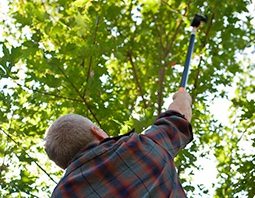Fall is here and the weather is cooling down. It’s the perfect time to protect your home against the frigid temperatures of ‘Old Man Winter’, which are just around the corner. Taking steps to winterize your home can save you hundreds of dollars in energy costs this season, not to mention protect your property from costly damages like burst pipes or a damaged roof.
Insulate Your Pipes

Insulating your pipes is an affordable way to cut down on your hot water heating costs. Not to mention, protecting exposed pipes can prevent them from freezing and ultimately bursting – something that could prove to be disastrous. Many hardware stores sell pre-cut pipe insulating foam that can easily be secured in place with duct tape.
Trim Tree Branches

Ice and snow are major home hazards during winter. When ice accumulates on tree limbs, they may buckle under the weight, falling on whatever lies below. Often, a roof or power line suffers the damage, which can be major nuisances for homeowners. Take time now to inspect your property for tree limbs that could present a threat this winter. It is much easier to have a professional remove dangerous limbs now than after the damage has been done.
Clean the Chimney

A chimney may seem like a decorative addition to your home’s profile, but it also plays an important role in removing dangerous gases from your home’s air space. Unfortunately, build-up and debris can cause a chimney fire. These fires can burn very hot and present a risk to the wood frame of your home. Hire a chimney sweep now to clean the chimney and prevent a fire this winter.
Conserve Heat and Energy
As much as 30 percent or more of a home’s heat energy costs are lost to waste every year through leaky drafts. Consider placing a draft guard at the base of external doorways, and caulk the edges of windows around your property. Alternatively, you can also purchase window film from a hardware store and apply it as a layer of insulation that protects against drafts.

On the inside of your home, take steps to ensure heat stays in living spaces. If you have ceiling fans throughout your home, run your fans in reverse throughout the winter. Since heat rises, the hot air pooled at the ceiling will be forced back into the living area, reducing heating costs. You should also inspect your home’s vents to ensure no furniture is preventing air flow and shut all doors to rooms within your home you do not use.
The information in this article was obtained from various sources. This content is offered for educational purposes only and does not represent contractual agreements, nor is it intended to replace manuals or instructions provided by the manufacturer or the advice of a qualified professional. The definitions, terms and coverage in a given policy may be different than those suggested here and such policy will be governed by the language contained therein. No warranty or appropriateness for a specific purpose is expressed or implied.


